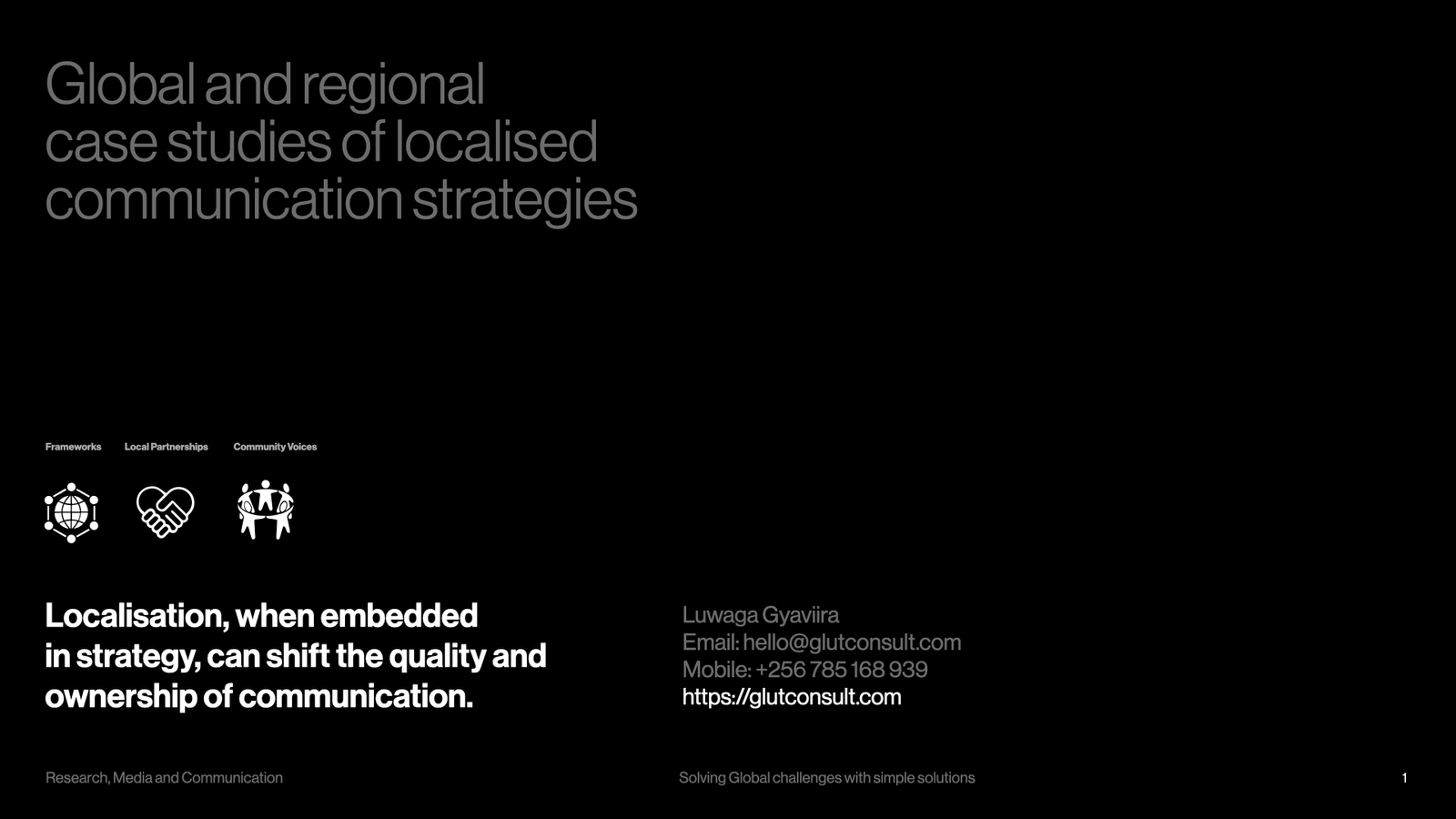When Amina, a refugee mother in Uganda’s West Nile region, tuned into her local radio station during the height of the COVID-19 pandemic, she wasn’t just looking for updates. She was listening for something deeper — a voice that understood her language, her culture, her fears.
What she found wasn’t a generic PSA read in a foreign accent. It was a call-in show hosted by people like her — community elders, youth leaders, and refugee journalists — broadcasting in Kakwa and Lugbara, weaving public health messages into folktales and everyday stories. The messages resonated because they belonged.
This is the power of localised communication: when messages are not just sent but co-created, not just translated but transformed. It’s a shift from talking at communities to working with them — embedding trust, culture, and adaptability into the very fabric of communication strategy.
In this section, we explore real-world case studies — from refugee-led radio stations in Uganda, to participatory theatre in Peru, to hygiene campaigns in Jordan’s Zaatari Camp. Each case reveals how local voices, when empowered and resourced, can reshape not only narratives but outcomes.
These stories offer more than best practices — they offer a blueprint for how communication can become a tool of dignity, inclusion, and transformation. To find out more, stay attuned for my book: communicating for change: strategic communication for social impact and development impact.
To read about these case studies, access the file here:

Leave a Reply